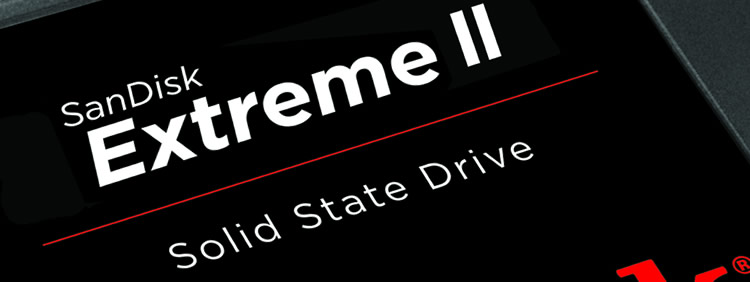Compared to the rapid performance increases and price decreases of flash memory over the past few years, solid state drive advancements have slowed down considerably in 2013 as modern drives have plateaued at SATA III's 6Gb/s bus. Current flash products are already maxing out the existent SATA spec for sequential reads and writes, so it's expected the industry will eventually move to SATA Express for bandwidths of up to 2GB/s using PCIe 3.0.
That transition will inevitably encourage an entirely new breed of SSDs as companies compete for your hard-earned cash, but until then, SSDs will become cheaper and more reliable through improved manufacturing processes.
A recent example would be the OCZ Vertex 450 which offers Vector-like speeds at a discount, while today's review unit from SanDisk shares similar attributes in terms of delivering affordable performance.

We have not reviewed any SanDisk SSDs in the past as they've mostly been OEM products. While proven to be reliable, they hardly pushed the performance envelope. For example, the original SanDisk Extreme SSD was based on the SandForce SF-2281 controller with a largely untouched firmware making it somewhat of a generic product.
The new Extreme II on the other hand features an in-house developed firmware which helps to set it apart from other SSDs using the same controller. Also of note, the second generation Extreme series has dumped the SandForce controller in favor of the new Marvell 88SS9187, the same controller used by the Crucial M500.
SanDisk is pricing the 240GB Extreme II competitively fetching around $230, right on target with the Vertex 450 and also in the neighborhood of the Samsung 840 Pro, which will remain a secondary focus throughout this review. It should be mentioned that when this drive shipped last month it was a tad more expensive (~$250). We bet this slight price adjustment will make SanDisk's entry more competitive against the SSD's creme of the crop which they are certainly going after with the Extreme II.
SanDisk Extreme II in Detail
The SanDisk Extreme II series is aimed at enthusiasts, with initial models offering capacities of 120GB, 240GB and 480GB. The drives have a slim 2.5" design, measuring 2.75 x 3.96 x 0.28". Power consumption is very low compared to conventional hard drives, as the Extreme II uses just 0.22 watts when active.
The 120GB model has read and write speeds of 550MB/s and 340MB/s. The 240GB version which we have for review is much faster, with 550MB/s reads and 510MB/s writes, while the 480GB model supports a read and write speed of 545MB/s and 500MB/s, making it slightly slower than the 240GB model.
All Extreme ll models are loaded with 19nm eX2 ABL MLC NAND synchronous flash memory. Our review sample has sixteen 16GB SanDisk 05226 0646 NAND ICs for a capacity of 256GB. That said it's advertised as a 240GB model as 6% of the original capacity is taken up by the nCache.
The nCache is designed to improve data integrity as well as the performance of small writes. When compared to the original Extreme series the second-generation drives have twice as much nCache available to them.
Once formatted in Windows, the original 240GB is converted to 223GiB, though Windows shows this as 223GB, so it seems like 7% of the original capacity has been lost. With a current retail price of $230, the Extreme II 240GB costs $0.95 per gigabyte, a very good value for a high-performance SSD.
The Marvell 88SS9187 controller (codenamed "Monet") features a dual-core Marvell 88FR102 V5 CPU with shared DTCM and ITCM SRAM. The controller supports up to a 1GB DDR3-1600 memory buffer, though SanDisk doesn't go quite that extreme. The 120GB model receives a 120MB buffer, the 240GB model a 256MB buffer and 512MB for the 480GB model, so that's about 1MB per every 1GB of NAND flash memory.
The SanDisk Extreme II SSD is qualified to deliver 80 terabytes of written data with a MTBF of two million hours. Regardless of its MTBF, the Extreme II carries a very respectable five-year warranty. It isn't clear if this rating is for the 120GB model and if so the larger 240GB and 480GB models should last much longer.
It's worth noting that unlike older SSDs such as the OCZ Vertex 4 the SanDisk Extreme II doesn't enable any sort of AES encryption or eDrive support, which is surprising.




